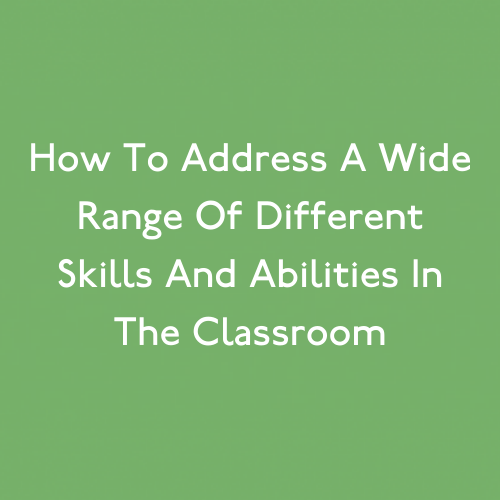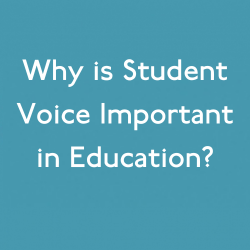All learners are different. Too often, when educators discuss different learning styles they can focus too closely on visual, audio, and kinesthetic modalities. But these are just various ways that we can comprehend information, and most people prefer a combination of multiple modalities.
Educators must take into consideration the wide range of different skills and abilities that show up in their classroom – not just diverse students themselves, but how their skills and abilities change throughout the school year and even day to day. Teachers are often challenged with feeling like they are juggling multiple needs all day long, struggling to manage large class sizes with a wide range of skill levels. Administrators and educators can work together to somewhat mitigate this through thoughtful programming, however in large schools it can simply be too challenging to thoughtful design classroom rosters. So how would a teacher address a wide range of skills and abilities in the classroom? The first and most important step is to get to know your students.
Accommodate different learning styles
It’s impossible to accommodate different learning styles without deeply understanding your students. Not just their learning preferences, but their educational history and experiences, their passions and motivators, and their insecurities and challenges. Getting to know your students isn’t just something you do at the beginning of the year, but all year long!
One of the best ways to manage different learning styles in a classroom is by grouping students intentionally. You may choose to group students who have commonalities together so you can provide direct instruction or specific to support to those students specifically. For example, if you know you have a small group of students who are struggling readers, you may group them together for a read-aloud and stop to ask comprehension and critical thinking questions throughout. Or, you may choose to group students of varying ability levels or skills together so they can support each other. Perhaps you group struggling readers with strong readers and invite a strong reader to read aloud, providing discussion questions for the group to discuss as they read.
Another powerful way to meet the needs of your learners is to provide students with more choices. This could be chosen over how they read new material – independently, in small groups, with partners, or listening to an audiobook. This could also be chosen over how to demonstrate their thinking – perhaps they have a discussion with peers, craft a written response, or create a video presentation. Expanding student choice in the classroom means is one of the easiest and most effective ways to meet the needs of diverse learners.
It’s important that students learn that abilities and skills are not a personal reflection of who they are as people, their value, or their worth. Skills and abilities are not fixed, they grow over time and they can be practiced and strengthened, like a muscle! Empower students by helping them become self-aware learners.
Assess, then adapt
Often, educators start the school year with ice-breakers and dedicated time spent discussing and establishing classroom norms. But by the second or third week of school, however, classrooms are often business-as-usual, diving into content and leaving very little room for play or community building. It’s critical that educators intentionally put forth the effort to continue getting to know students throughout the year, especially because children are constantly growing. One year of growth is a significant amount of time in a child’s life! Educators can use informal assessments throughout the year to continue to get to know students. Similar to the kinds of checks-for-understanding that happen in content areas, teachers can incorporate questions around preferences and learning styles to more holistically understand the learners in their classroom. Even a simple question after each lesson can provide a lot of insight! Ask students what they liked most about the lesson, what they liked least, and what they’d change for next time. This can give a teacher a lot of insight into students’ perceptions of their own learn and their learning preferences to make adjustments throughout the year.
When it comes to how would a teacher address a wide range of skills and abilities in the classroom, don’t just evaluate a student’s academic performance! It’s important to continuously gather as much information about students as possible and incorporate your insights into classroom practices to better meet the needs of diverse learners. This can be done by the following:
- adjusting student groups
- providing multiple modalities to interact with content
- breaking large topics down into smaller pieces
- incorporating more student voice and choice into your classroom
All of which are adaptions that are more feasible when you understand your students and their learning needs.
The Nation’s Leading SEL Company
Move This World is the leading provider of social emotional learning (SEL) multimedia experiences for students, teachers, and families. Our SEL programs are customized for PreK-12 students and are delivered through short interactive lessons with the goal of empowering students to navigate the rapidly-changing realities of their world – both in the classroom and throughout their lives. The impactful yet simple Move This World SEL curriculum allows educators and families to incorporate Social Emotional Learning into their schedules every day, without planning or prep.
Contact us to learn more about SEL Grants and bringing Social Emotional Learning to your classroom.
Related links:










